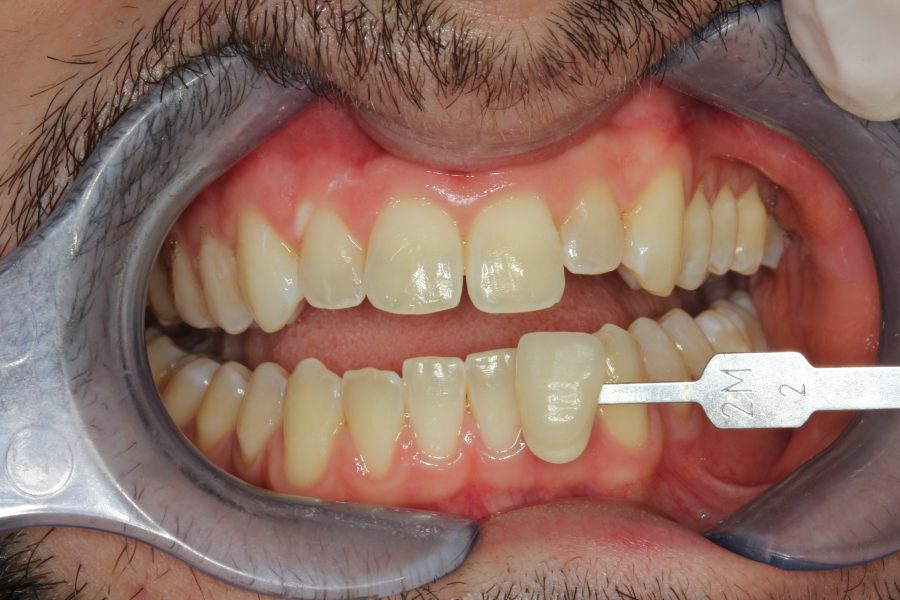COSMETIC DENTISTRY
Tooth whitening is one of the most conservative ways to improve a patient’s smile. With the use of bleaching agents we are able to remove any stains accumulated on the surface structure of the tooth. This results in a brighter, whiter and more natural tooth appearance.
The main ingredient of whitening agents is carbamide peroxide or hydrogen peroxide. When delivered to the tooth surface these react with the tooth stains, which are organic compounds that have conjugated double bonds in their chemical structure. This chemical reaction, which is called oxidization, breaks apart these double bonds and results into the formation of smaller compounds of lighter color.
Clinically what the patient immediately can see is a brighter tooth color.
The concentration of whitening agents varies depending on the desired outcome and the method of application. For in-office applications, which are performed in a controlled manner under isolation of the gums, concentrations are typically between 35-38%. For home bleaching, using customized bleaching trays, concentrations are usually 10-20% for carbamide peroxide products and 3-6% for hydrogen peroxide products.
In our clinic we recommend a combined approach of 1-2 in-office applications followed by home applications for 1-2 weeks.

